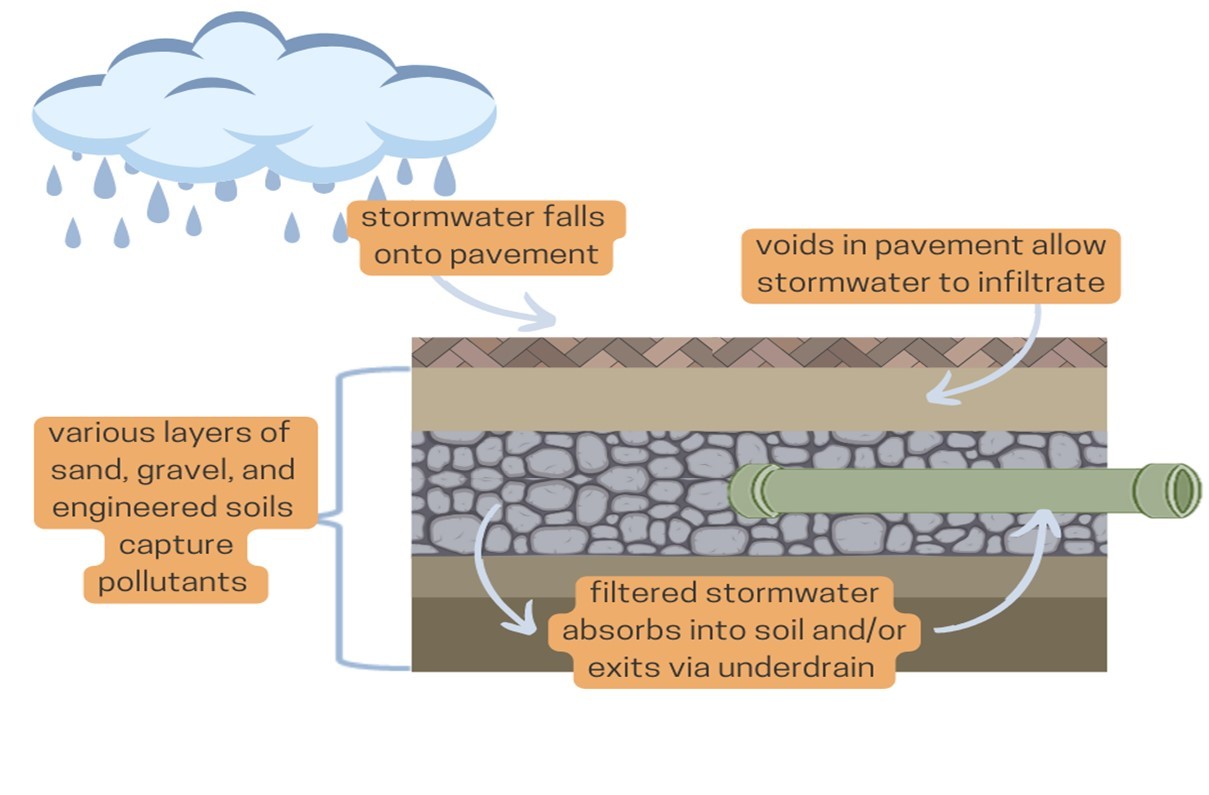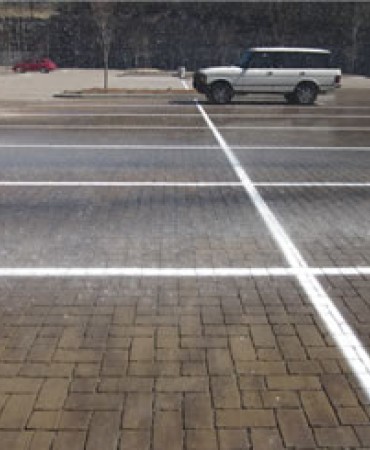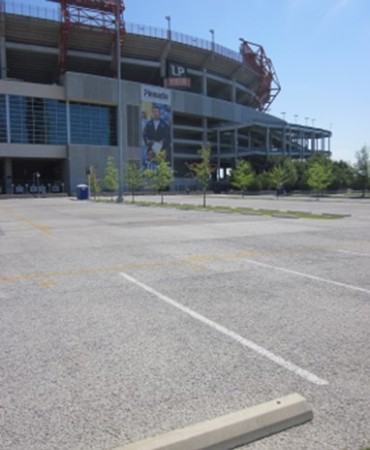Permeable pavement surfaces capture and temporarily store stormwater by filtering runoff through voids in the pavement surface. Filtered runoff may be collected and returned to the stormwater conveyance system or allowed to infiltrate into the surrounding soils.
More information on this Green Infrastructure Practice can be found in the Stormwater Management Manual.
Permeable Pavement Flow Graphic

Stormwater infiltrates through voids in the pavement and flows through layers of sand, gravel, and soils. This allows oil, sediment, and other parking lot pollutants, to be captured instead of being flushed directly to stormwater systems. The filtered stormwater can then absorb into the soil. Most permeable pavement installations have an underdrain that discharges to the stormwater drainage system when the soil becomes saturated.
Maintenance
Property owners are responsible for inspecting and maintaining stormwater control measures on their property.
Inspection and maintenance requirements for your specific stormwater control measure are filed with your property deed. These documents are available through the Metro Nashville Register of Deeds.
Typical inspection and maintenance concerns
- Inspect for sediment build-up or oily drip areas that may be blocking pores within the pavement or spaces between the pavers.
- Observe the pavement during a rain event to see if there are any areas that are ponding and not draining properly.
- Frequent preventative maintenance is required, such as blowing or sweeping off loose grit and debris that can eventually clog pores.
- More intense professional cleaning, including high-pressure vacuum systems, such as street sweepers, may be required if areas become clogged and are not infiltrating stormwater.
- Certain pervious structures, such as permeable pavers, require special regenerative sweeping practices to prevent the gravel between the bricks from being removed. A professional should be consulted when detailed cleanings are required.
- If maintenance needs are identified during the inspection, ensure that service is performed in a timely manner to prevent larger problems from occurring in the future.
File Maintenance Report
File your Annual Inspection and Maintenance Report.






